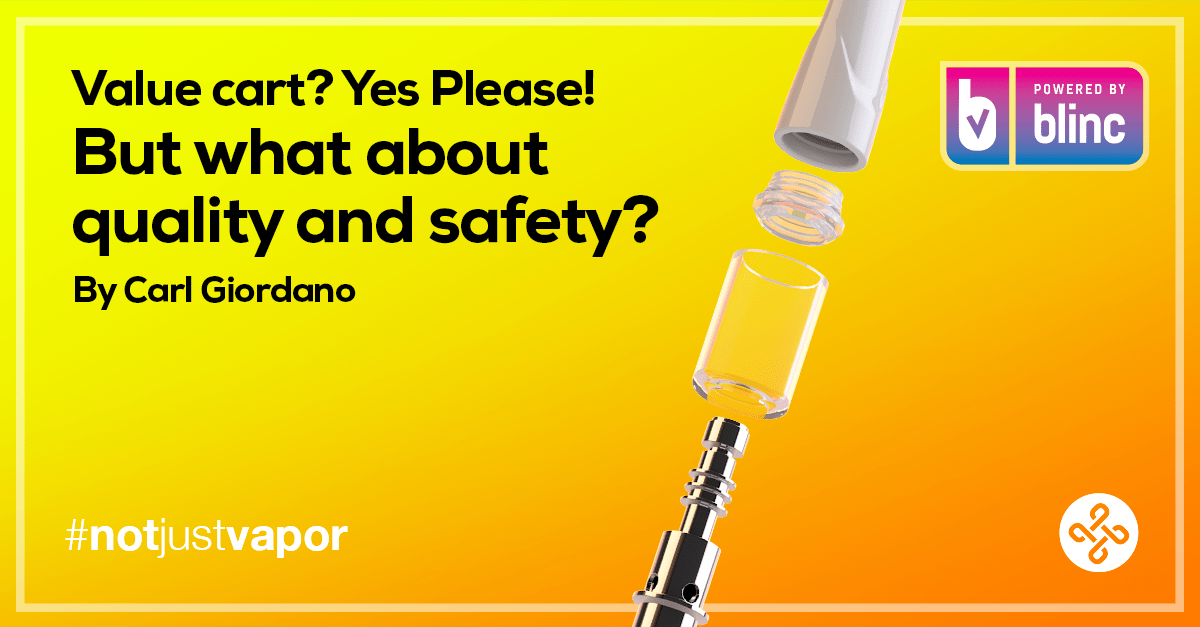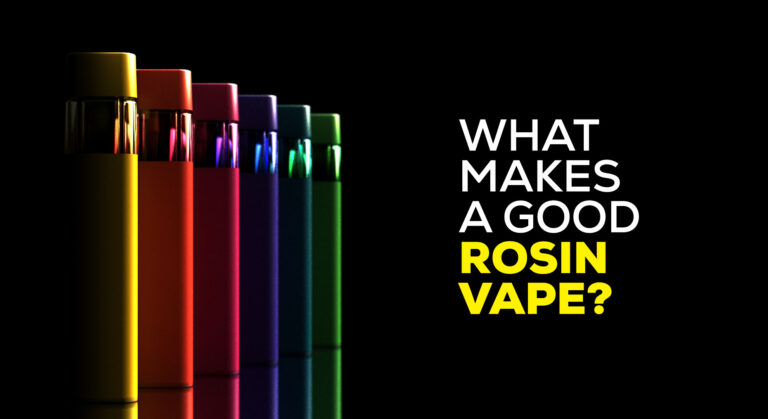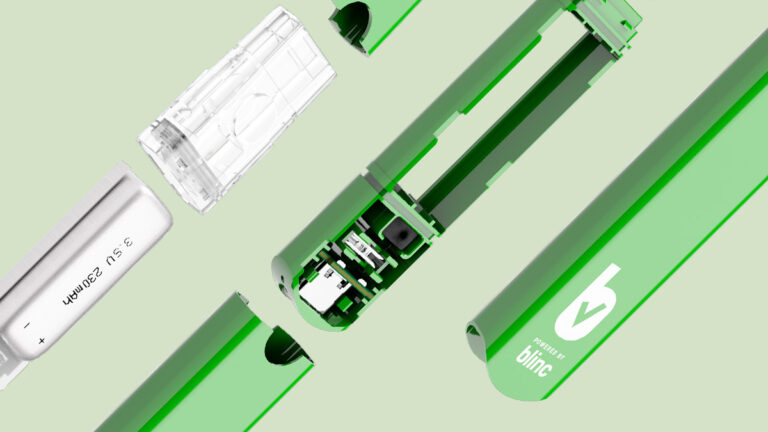As the director of customer success for the Blinc Group, one of the great pleasures of the job is getting out on the road and visiting manufacturing facilities and dispensaries. Vaping is such an important part of the cannabis market that the more knowledge and experience shared, the better.
But recently, in my efforts to orchestrate a road show on the importance of quality, safety and compliance in the manufacturing of vape cartridges, I had a dispensary owner tell me that he would not be interested in me coming in to discuss these topics with budtenders as he did not see it as directly benefiting sales.
This was obviously disappointing to me. After all, it is a fact that the cartridge chosen will determine the safety and overall performance of the vape experience. Spit back, clogging, leaking, harshness and contamination are all real problems that a user can and does experience as a result of cannabis brands pairing their oil with the wrong hardware or, even worse, choosing hardware based on price alone.
This rejection got me thinking that if this dispensary is not questioning the vape hardware it is purchasing from its distributors and if these distributors are not demanding the best hardware from their processors, then we have failed as an industry to protect the consumer.
Sadly, there is great demand in the cannabis industry for cheaper and cheaper cartridges. As margins get squeezed and retail prices begin to fall, saving a few dimes on a cartridge seems to make sense. However, the health and reputational risks are enormous.
An example of what separates some low end cartridges from others is the use of glass or plastic in the construction of the tank. Despite the obvious manufacturing and cost advantages of plastic over glass, the safety of the material has been a constant source of controversy for years. Health effects of bis-phenol A (BPA), warnings from the American Academy of Pediatrics, debates over the safety of microwavable plastics to water bottles to Keurig coffee pods have been a constant theme in our lives for decades.
Science has taught us that as acidity and temperature increase, so do the health risks of using plastics. Granted, not all plastics are the same, and no doubt there are many safe uses of plastics in the world, but consider this: Cannabis oil is highly acidic and temperatures within vaping devices reach 100 C to 400 C. Those two facts alone should be enough to convince cannabis brands, distributors, dispensary owners and state regulators to think twice about plastic vape cartridges.
Why take the risk? The only answer to this question is the insatiable demand for profit over the safety of patients and consumers.
Since inception, the Blinc Group has resisted the temptation to supply the cannabis market with these highly sought after plastic cartridges and has insisted on only bringing cartridges to market that use borosilicate glass, with exceptional chemical durability and high heat resistance. This sentiment is deep rooted in the culture of the company beginning with Arnaud Dumas de Rauly, co-founder, CEO and also chairman of ISO/TC 126/SC 3 on vape and vapor products:
“All in all, the precautionary principle states that if a product, an action, or a policy has a suspected risk of causing harm to the public or to the environment, protective action should be supported before there is complete scientific proof of a risk. In this case, we know that polycarbonate contains BPA, so why take the risk of using a poly based cartridge if it contains a possibly toxic component?” – Arnaud Dumas De Rauly
When Blinc set out to create a low cost cartridge, we did so by redeigning the cartridge itself to use less parts, rather than looking at lower cost materials. Our entry level cart, the XPro V1 is still powered by a ceramic core and is still made of quartz glass. Granted it doesnt have all the customization flexibility and bells and whistles of our higher end carts, but it checks all the boxes on safety, compliance and consistency – ensuring the absolute safety and satisfaction of the end user.
As the vape segment of the cannabis market continues to grow exponentially, it’s important the safety education keeps up. The glass vs plastic debate is only one of many differentiating variables in the design and manufacturing of vape hardware. Patients and consumers should be aware of the risks. Budtenders should be stearing patrons towards higher quality vape products and that starts with an understanding of the cartridge itself, not just what’s inside.
#notjustvapor









